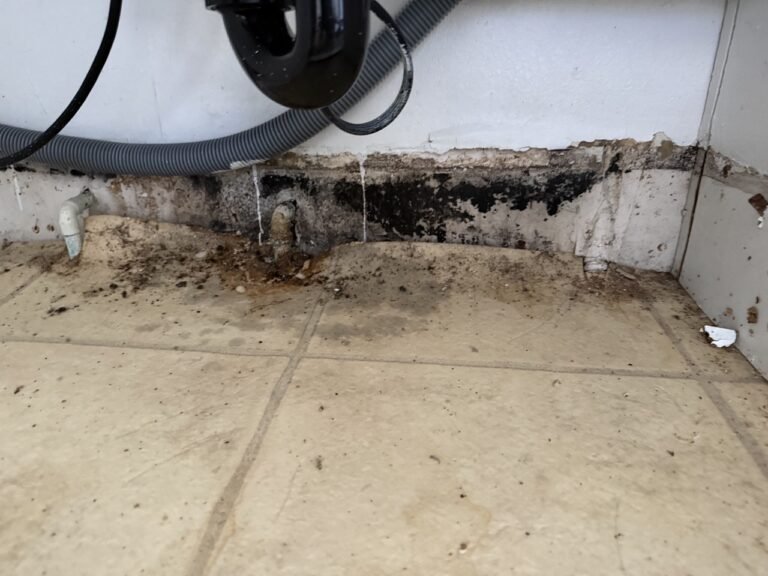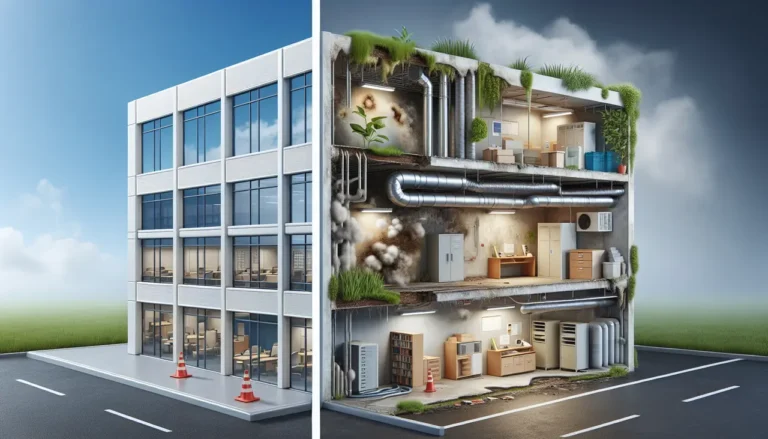
Why Southern California Homes Are at High Risk for Mold
Mold may not be the first thing you think about in sunny Southern California, but it’s a serious risk. From
Is it safe to work in a building with mold? That’s a question no one should ever have to ask. Mold is a sneaky threat that quietly damages property and harms people’s health. In offices, warehouses, retail stores, and other busy work environments, the risks multiply because of higher foot traffic and critical business operations.
The stakes are even higher for landlords and property managers. You have a responsibility to keep your space not just functional, but safe and livable.
Onsite Pro Restoration has seen firsthand how much damage hidden mold in buildings can cause. That’s why you need to be as proactive as possible about mold prevention and remediation.
Many people think mold only shows up in old or neglected properties, but that’s not true. Sometimes, moisture gets trapped during construction and develops into mold. Or, a building might have issues with its plumbing and ventilation systems.
Other common causes of mold in commercial buildings include damaged roofs, leaky windows and gutters, and too much humidity. HVAC systems are also a prime culprit because they create condensation.
High-risk areas include restrooms, basements, ceilings that have had water damage in the past, and areas around air ducts or vents. Unfortunately, mold loves dark, damp spots, so it doesn’t always grow where you can easily see it. It hides behind drywall, under flooring, or inside ductwork. If you can see it, it’s likely already a grave problem. That’s what makes dealing with it so tricky.
It is definitely not safe to work in a building with mold. Even if it’s not black mold, the spores can trigger a variety of symptoms. These include wheezing, persistent coughing, sinus congestion, headaches, fatigue, and eyes, throat, and skin irritation.
The effects of mold in buildings can be far more serious for people with asthma or weak immune systems, potentially leading to respiratory infections or making their conditions worse.
In environments where people spend a lot of time, like offices or warehouses, even small amounts of mold can hurt productivity and lead to long-term health issues.
Plus, from a legal point of view, ignoring mold could put you, the business owner or property manager, in violation of the Occupational Safety and Health Administration’s (OSHA) standards for indoor air quality and safe working conditions. This brings up another important consideration…
Mold in buildings is also a major liability. Property owners could face lawsuits from tenants, employees, or even customers who get sick and can link it to exposure in their building. In 2021, for example, a woman in South Florida was awarded a staggering $48 million after toxic mold in their apartment caused lasting health complications.
This financial hit doesn’t stop with legal fees. Mold infestations can damage your property, forcing temporary shutdowns that disrupt business operations. Your insurance may not cover these losses, especially if the mold in your building was caused by neglect or poor upkeep.
On top of all that, mold can lower the value of commercial properties and make them harder to rent out or sell. Nobody wants to inherit a hidden problem.
Remember, mold doesn’t always show itself openly. Be vigilant for subtle indicators like funky odors, unexplained stains, peeling paint, warped drywall, and such.
You might also notice an increase in allergy-like symptoms among building occupants or customers, such as sneezing, coughing, itchy eyes, or headaches that seem to worsen indoors. It is not safe to work in a building with mold, so do not ignore these issues.
Also, watch out for more humidity indoors or a sudden increase in HVAC repairs. Those are red flags because mold thrives in ductwork and clogged systems. If your property suddenly needs a lot more upkeep, it’s worth investigating what’s behind it.
The best way to deal with mold in buildings is to stop it before it even starts. This means regularly testing air quality and inspecting your property, especially places where leaks, moisture, or poor ventilation are common.
Don’t wait until you see obvious damage. Deal with any plumbing problems, water stains, or sudden increases in humidity as soon as they arise.
You need professionals like Onsite Pro Restoration to do an assessment. We conduct thorough inspections and use advanced tools for mold testing.
Our mold services include a detailed report of mold types and contaminants we find, along with a custom remediation plan designed by experts. And if you do have an infestation of mold in your building, our experienced team will help you get your space back to being clean and safe in no time. Contact us today to schedule an inspection.

Pete Mantizian is the dedicated owner of Onsite Pro Restoration. He is driven by a passion to improve living conditions and prevent health issues caused by improper restoration. With over 10 years in construction and 7 years in restoration, Petros has managed projects for major franchises like Serv-Pro and 911 Restoration. He holds certifications in Applied Structural Drying, Microbial Remediation, and more. Committed to excellence, Petros ensures every project is done right the first time. Outside of work, he cherishes time with his loving wife and two children, balancing his fulfilling career with creating lasting family memories.
Share
Mold in offices, warehouses, or rental spaces can put tenants and employees at risk. Call (818) 336-1800, email info@onsitepro.org, or complete the form below to speak with our commercial mold specialists. We’ll provide fast assessments, clear solutions, and professional remediation to protect your building and business.

Mold may not be the first thing you think about in sunny Southern California, but it’s a serious risk. From

Discover the risks of mold in commercial buildings and take action with our guide on commercial mold removal.

Discover expert tips for selecting the best flood damage service with ‘The Essential Guide to Choosing a Flood Damage Service’